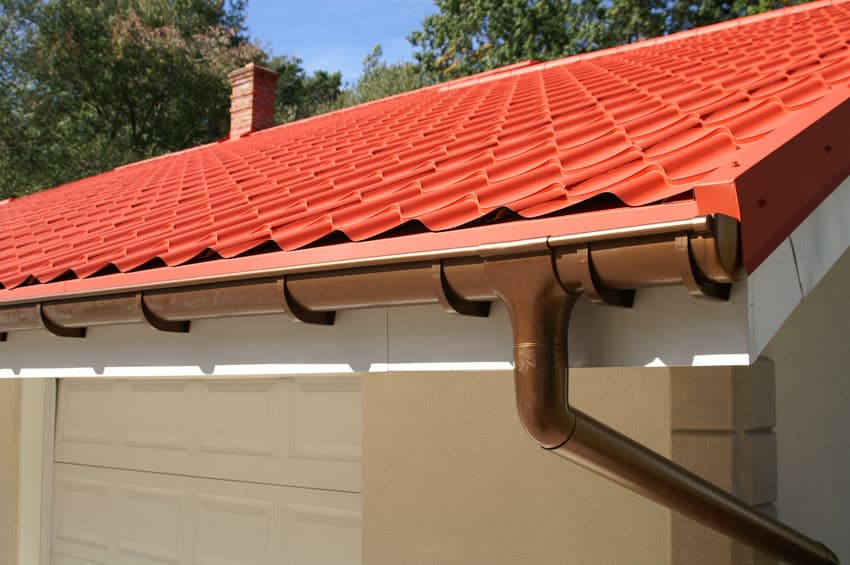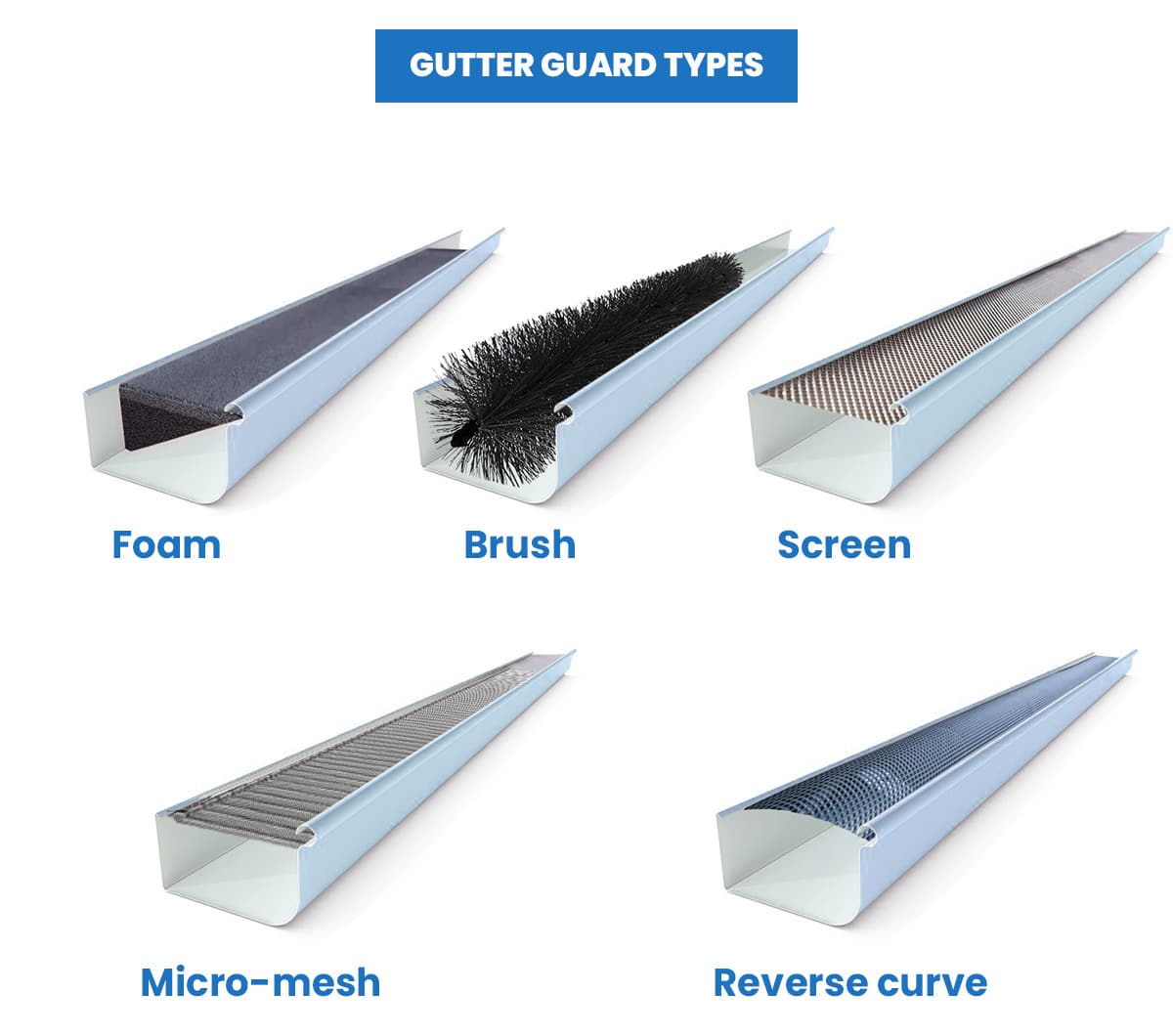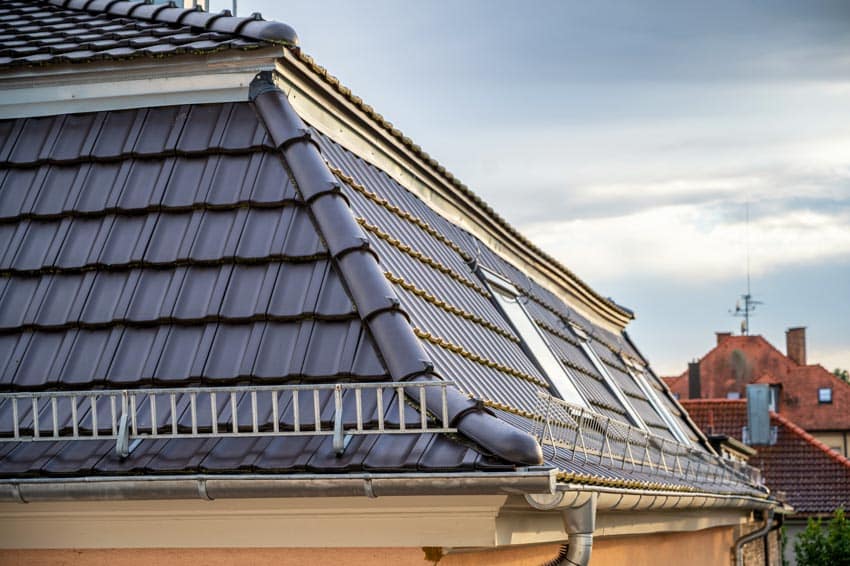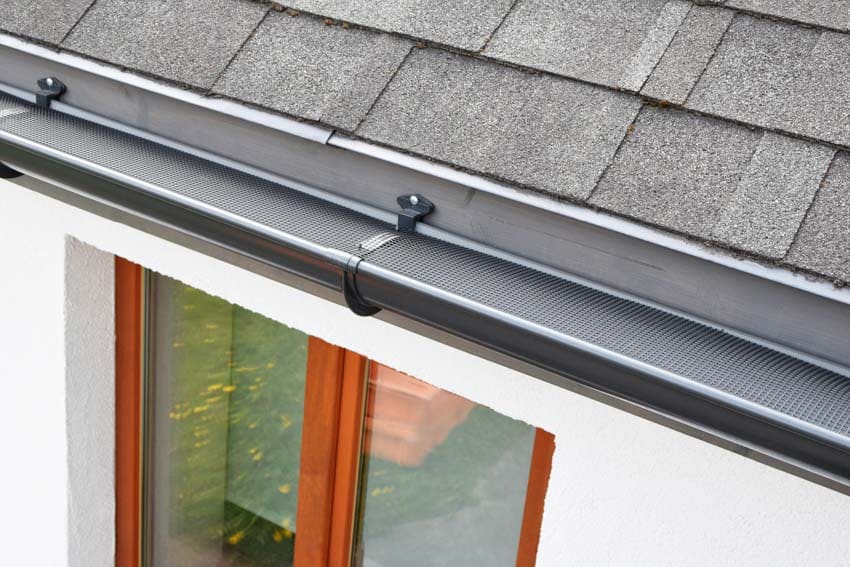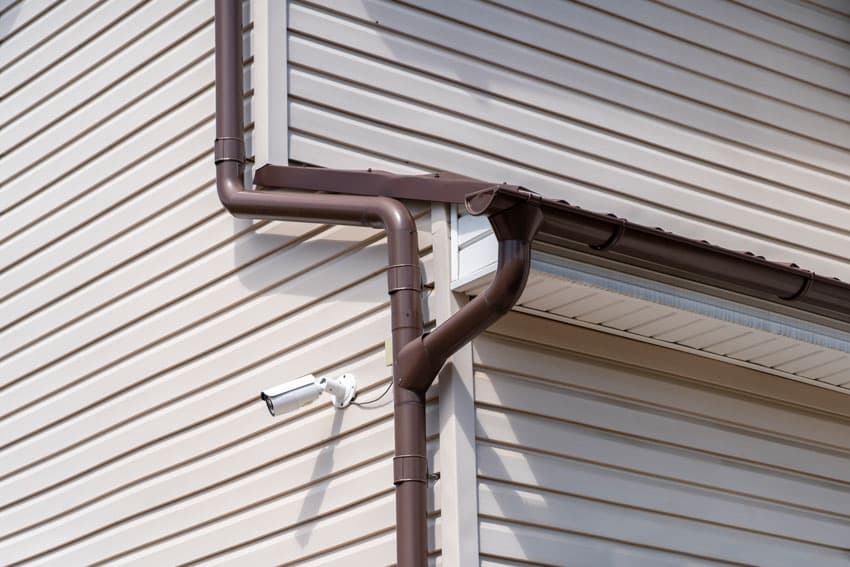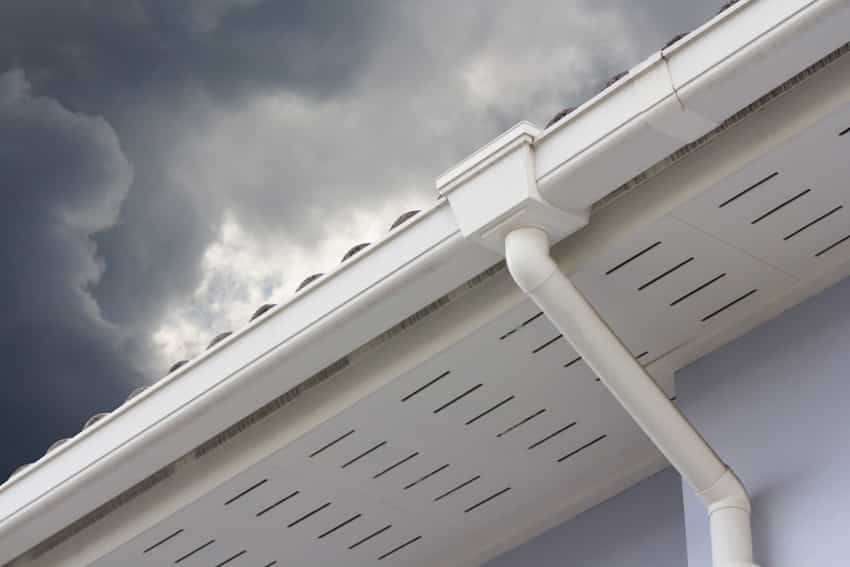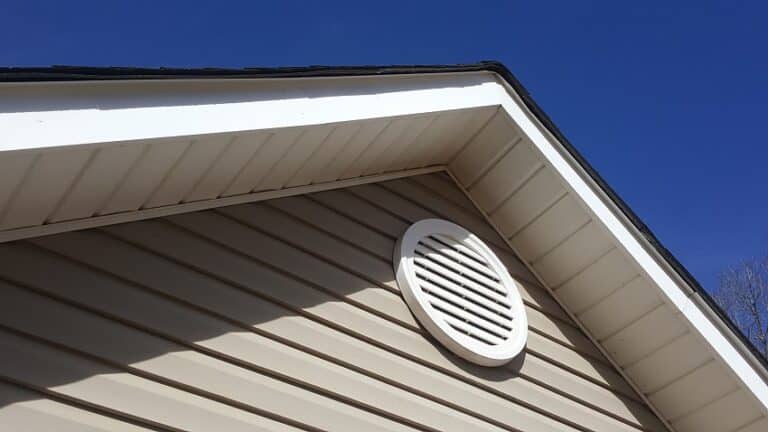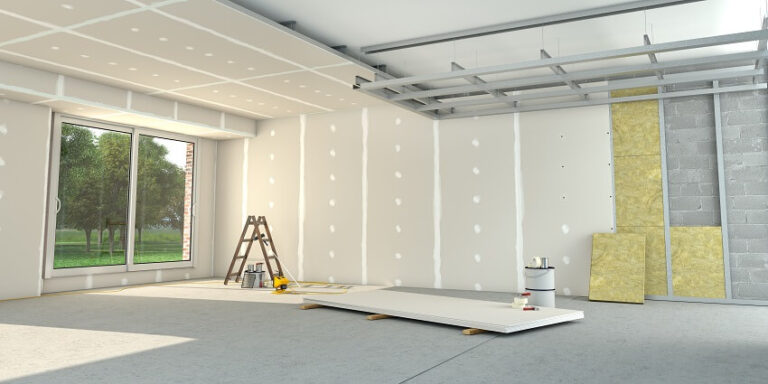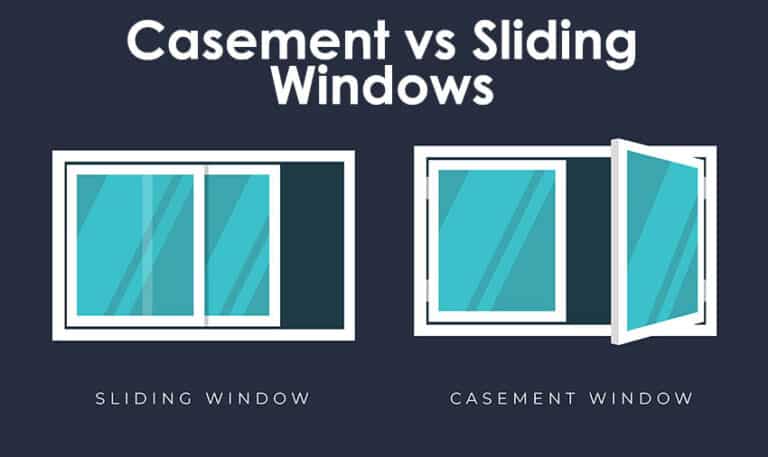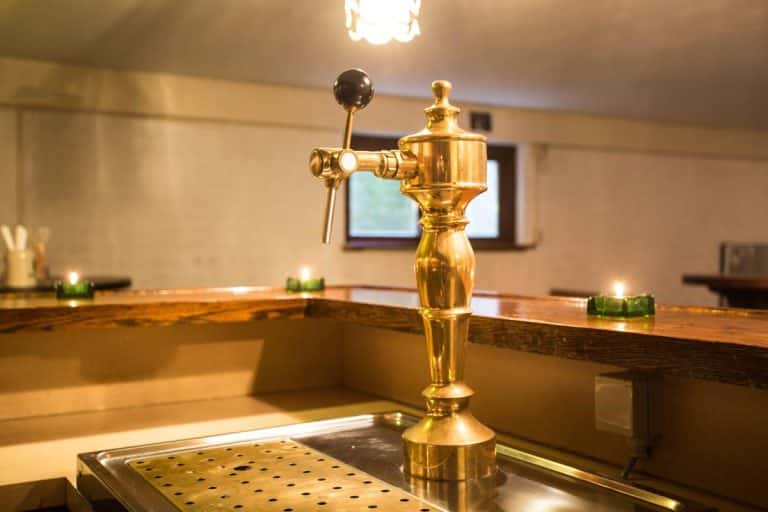5 Types of Gutter Guards (Pros and Cons)

Gutter guards are a valuable option for homeowners looking to protect their roof drainage system from damage caused by debris like pine needles and leaves.
Overflowing gutters can be a big problem for your house when not taken care of. The worst-case scenario is that these gutters cause a leak in the walls that can affect the foundation of your home or building.
While you can always call your local roofing company to clean your gutters, prevention is always better than a solution. How? You can always use gutter guards. Screen mesh covers are a popular product among homeowners to minimize the need for regular cleaning.
Using a shield or mesh will save you the trouble of calling your local roofing company every now and then for cleanup, saving you effort and money in the process. But before you go out and buy yourself some gutter guards, let’s explore all the information about it.
How Do Gutter Leaf Guards Help?
Gutters help you control the water that hits and leaves your roof while gutter guards make sure that debris won’t be stuck in the drainage. This will not just prevent worse problems in the future but also save you from needing frequent cleaning and roof maintenance.
Basically, they strain the debris out of the channels, from twigs and sticks to wet leaves and tree nuts, and let the rainwater freely flow. These guards are placed on top of existing gutters and can be a cap or a liner.
For installation, proper positioning under the roofing material is necessary. For drip-edged roof types, you will need to clamp the gutterscreens at the front and underneath the entire roof so that it can sit at the edge.
For others, screens are installed between the shingles and the starter shingles. But the real question is, do gutter guards even work? And how do they work in the first place?
How Do Gutter Leaf Guards Work?
Gutter guards would work if they were properly installed. But it is still not foolproof protection against clogging. Bear in mind, though that when you buy and install gutter guards, it doesn’t mean that you won’t need to clean your downspouts again.
It just lessens the frequency you have to ask for clean-up and maintenance for your gutters. But how does it work?
These products are installed on the roof, particularly either clamped underneath and in front of the gutters or in between the different types of roof shingles.
The covers help filter out debris from going all the way to the gutter and getting stuck in there. That’s as simple as it gets.
If you’re planning to install a system on your roof, it is important to figure out which one is the ideal type for your home.
Types Of Gutter Guards
There are different kinds of gutter guards, and you need to be aware of the varieties to decide on the ideal type to install on the roof. They have the benefit to prevent snow, ice, branches, grime, grit, sand, and dirt from clogging your gutters.
Some may think that there are only two types of gutter guards, which include screens and helmets. The truth is that there are more options to explore.
Brush
A brush gutter guard has long and stiff brush bristles that, when installed into the drainage channel will allow water to freely flow through the brush itself while the debris, such as branches and dirt, stays on top of it.
This is how it protects the roof and the entire home. Here are the pros and cons of using this particular style.
| Pros | Cons |
| Lower Price | Not Durable |
| Easy Installation | Easily Gets Clogged |
| Open for DIY | Increased Maintenance |
| Easy to Remove for Cleaning | Small Debris Can Pass Through |
| Blocks Large Debris |
Reverse Curve Gutter Systems (Surface Tension)
A Reverse Curve Gutter Guard, also known as a Surface Tension style, is installed so that it curves downward from the roof into the drainage channel.
The design of this drainage system allows large debris like branches and grit to fall to the ground while water passes through a slit all the way down.
Here are the pros and cons of using these gutter guards.
| Pros | Cons |
| Above Average Durability | High Price: Expensive (Especially with the Installation Cost) |
| Typically Comes with A Warranty | Needs Professional Installation |
| Handles Blocking Large Debris with Small Debris Down the Ground | Visible from the Ground |
| Allows Water to Flow Properly | Can Lift Up Roof Shingles and End Up Voiding Your Roof Warranty |
| Lowers A Home’s Curb Appeal |
A reverse curve drainage system is a bit complicated to install, which is why it requires professional roofing contractors to work effectively. The roof shingles need to be lifted for the installation, so you won’t be able to DIY it all the way.
This makes it more expensive though but more durable than other types. One thing that will be less to worry about is that there’s a warranty included in the package.
Foam Gutter Covers
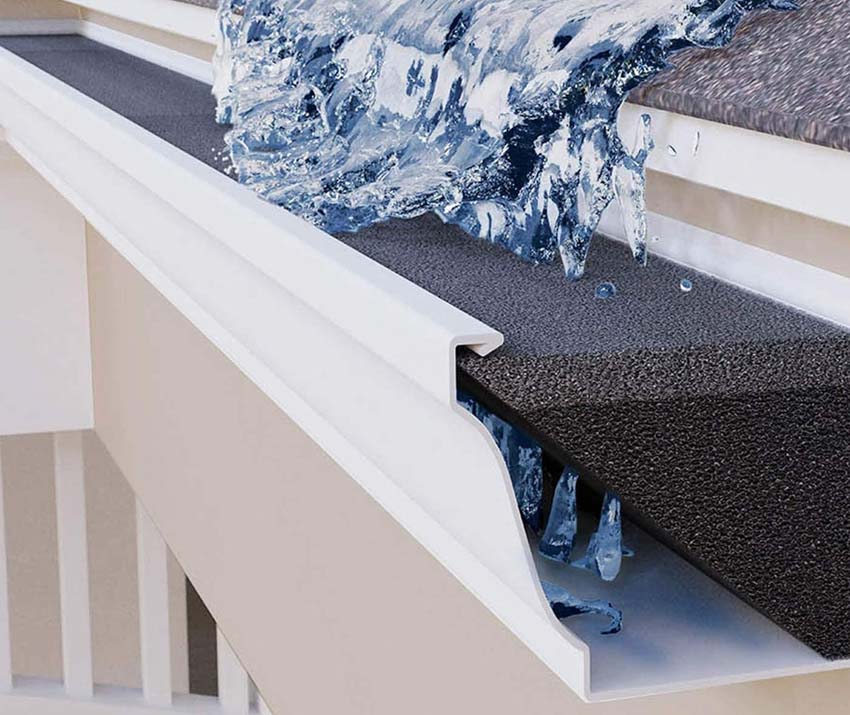
A foam gutter guard means that you will fit foam pieces inside the drainage channels of your roof, which can hopefully stop debris such as sand and dirt from going down your drains and getting clogged. Here are the pros and cons you have to know about this style.
| Pros | Cons |
| Lower Price: Affordable | Not Durable |
| Easy Installation | Debris Build Up On Top of the Foam |
| DIY Possible | Removing & Cleaning Will Be A Challenge |
| Compatible with A Variety of Styles | Seedlings & Trees Can Grow from the FoamGuards Causing Damage |
| Clogs Easily Form On Top of the Foam | |
| Can Be A Fire Hazard |
Foam gutter guards are affordable and easy to work with but can also be difficult to take out and clean, especially when dealing with grime.
While it might work and stop large debris from clogging the channels, it can actually lead to a worse problem if a seedling grows in the foam. And it can get very messy with a lot of effort just to maintain it.
Gutter Screens
Gutter screens have large holes that are installed on top of the roof runoff channels, and it’s a very simple and easy process without needing a professional’s help with the installation.
These screens are made from either aluminum wire or powder-coated steel wire and arranged in an expanded mesh.
These screens work by allowing water to flow into channels but catching any debris like ice and leaves that may come with it.
Smaller debris, such as needles, acorns, and mud, can be a problem since these materials can slip between the wires. Sludge, gunk, and goop may also accumulate over time, further contributing to the issue.
If you are interested and thinking about installing one at home, here are the pros and cons you can work with. You should consider your own experience and job skills when deciding whether to tackle the installation yourself.
| Pros | Cons |
| Low to Mid Price Range | Some Debris May Pass-through Because of Large Openings & Holes |
| Incredibly Durable | Needs Removal & Cleaning Once A Year |
| Easy Installation | Not Stable – Can Be Blown Off During Windy Conditions |
| DIY Possible |
These gutter screens are more durable compared to other drainage systems and are easy to install. You can even DIY it, but it must be appropriately done so that the screen won’t be blown off from the roof, especially during the windy weather condition.
In order to make sure that the drainage screen works, you need to clean it out at least once a year. This means removing the meshto clean it more thoroughly, dealing with any accumulated gunk or goop.
Micro Mesh Protector
Micro-mesh is a type of gutter guard that includes a mesh sheet with tiny holes compared to the standard screen protector.
This particular design works by allowing water to pass through the small holes of the mesh sheet with the debris trapped on top of it. Here are the pros and cons of a micromesh systems.
| Pros | Cons |
| Highly Durable | Mid to High Price Range (Including Installation Cost) |
| Incredibly Effective Compared to Other Styles | Professional Installation |
| Easy Debris Cleaning & Removal | Variety of Types & Some with Inferior Quality |
| Enables the Best Water Flow Away the Home’s Foundation | |
| Offers Permanent Solution to Clogged Gutters | |
| Backed by A Warranty |
While similar to the standard mesh screens, this type is considered a level better because, with smaller holes in the mesh sheet, it is able to strain smaller debris and keep them away from the gutters. Made from stainless steel, this rainwater system is highly durable too.
Another great factor is that it’s backed by a warranty with a solution considered to be permanent against clogged gutters.
Best Type Of Gutter Protection To Use
With all the different types of gutter guards, which one is ideal for your gutters? Identifying the pros and cons of the different types is the first step.
Comparing them from each other can also help you decide the best drainage system to install. Here are some of the factors to consider:
Quality: These drainage covers and barriers have different levels of quality that can range from flimsy durability to solid durability, depending on the material they’re made from and how they are installed in the first place.
Brush and foam protectors are not durable at all, while the best ones in terms of quality and durability are screens and micro mesh products, with the micro mesh known for its durability since it’s made from stainless steel.
I have micro mesh protectors installed on my home and I have a love hate relationship with them. They do help keep leaves and debris out. The downside is that much of this debris will sit right on top causing many of the same problems.
I find myself still frequently climbing a ladder to brush all the fallen leaves, sticks and dirt away. Of course, I have large oak trees and mulberry trees nearby that drop a lot of material. So your situation may be very different from mine.
Pricing: Another factor to consider when choosing the best gutter guard is their prices. High-priced drainage systems are usually more effective. While this is not true all the time, it is a fair enough conclusion.
Gutter guards have different prices and differ based on the material they are made from. For example, gutter screens are more affordable than gutter guards.
Aluminum wire screens can cost $4.25 per linear foot, while powder-coated wire screens can cost $5.50 per linear foot. For advanced rainwater systems, though, it can cost you around $30 per linear foot in your property‘s roof area.
Gutter guards made from high-quality materials can increase their prices. Mesh and micro-mesh have better quality and are made from durable materials, which is why they have a high price compared to other types. When addressing issues related to gutter maintenance, buying premium products might be worth considering.
Installation can also increase the prices of the rainwater and debris diverters. Those that require professional installation will cost you more compared to those types you can install on your own. You can DIY other types of mesh screens with the right tools, and it will cost you very little.
These 2 factors set the price, so set your budget and choose the ideal one to protect your home. Weigh both quality and pricing and check out the specific type to fit your needs.
Before you purchase, make sure to measure properly and ask any questions about choosing a product for your property, as the installation process can be time-consuming.
Do They Work In Heavy Rain?
These drainage systems on a house exterior are used primarily to protect the gutter from debris and clogging, especially during heavy rain. The problem, though, is that during heavy rain, smaller debris can clog the drains, and continuous rain can bring in more debris.
While most screening products can stop large debris, most cannot do anything about small debris. They can build up over time and become less effective when handling heavy rain downpours.
To answer the question of whether gutter guards work in heavy rain or not depends on the type you have installed. Screens can be blown over by the wind, but that’s not the case with the micro mesh covers. Foam inserts can easily be clogged and so would be less effective in heavy rain especially if you have nearby trees that constantly drop leaves and branches.
Can They Cause Roof Leaks?
Gutter guards can also cause roof leaks if they are not properly installed and maintained. Some designs work better than others. However heavy rain can be the reason for these roof leaks, especially since most types are not that durable. Proper installation and repair can help prevent these issues.
While some freely allow water to flow right into the gutter, there are gutter guards that can restrict water inflow, and this could cause roof leaks, especially when the rain gets heavy. Restricting water flow can lead to slow drainage, which will then, unfortunately, make water flow everywhere and anywhere you don’t want it to go.
Roof leaks may not be the worst problem you will encounter with clogged gutter and slow drainage, though since they can leak towards the foundation of the home.
See more related content in our article about the different types of roof overhangs on this page.

